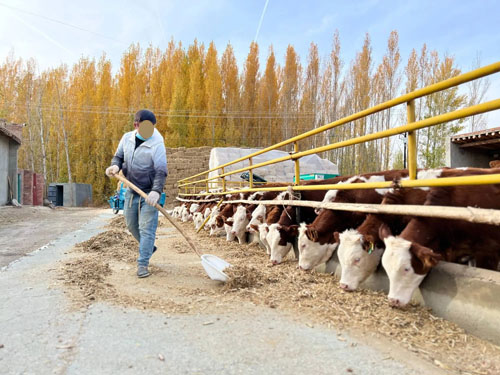Imagine chatting with another farmer or vet over coffee. You’d ask: “Hey, what tools are helping you manage your herd better?” And you’d probably hear: “Portable ultrasound scanners – total game‑changer for livestock.” That’s exactly what we’re digging into here: how translation to “超声波” in Chinese is replaced by “ultrasound,” and why vets and livestock farmers overseas swear by these compact machines for managing cattle, mouton, goats and more.

As a livestock farmer or mobile vet, knowing how animals are doing — from early pregnancy to muscle and fat development — makes a world of difference. With durable handheld ultrasound units, we can walk into a pen, scan a cow or ewe right where she stands, and get clear real‑time images that inform decisions immediately.
Why field‑ready ultrasound matters
Let’s start with why farmers overseas love portable ultrasound:
-
Early pregnancy detection – You can tell as early as 28–30 days after breeding if an animal is pregnant. That beats waiting weeks to palpate, which delays decisions on feed or re‑insemination.
-
Saving on feed costs – Identifying open cows early means you’re not throwing away feed each winter on unproductive animals. Ultrasound cuts 10–15 open days per cow per year compared with palpation.
-
Efficient herd management – You can group animals by breeding stage, manage calving windows more tightly, and sort out late breeders or problem cows early.
-
Disease reduction and hygiene – Using your own unit avoids cross‑farm disease transfer, which is a worry with shared equipment.
Add to that the portability: léger, battery‑powered, splash‑proof, often rugged enough to survive kicks, mud and rain. Many units are around 2 kg and even come in waist‑worn bags for hands‑free scanning.
What units are vets actually using?
Forum discussions and user feedback show some favorite brands:
-
E.I. Medical IBEX Evo or Ibex Pro – built tough, water-resistant, long battery life, often used by mobile vets in Europe and the US. Veterans praise it for scanning dozens of mares or cows in a day.
-
Easi‑Scan from IMV – lightweight (about 4 lbs), excellent image resolution, IP65 rating, long standby battery life, and comes with goggles or remote display options. Designed specifically for cattle herds.
-
Draminski, Sonoscape, Mindray, et Daiwi/Wellue (Dawei) – popular in Europe and elsewhere. Draminski offers small units and strap-on designs, Sonoscape and Mindray deliver great image quality, Mindray’s Vetus E7 and M6 Vet are mid‑range portable powerhouses.
-
BXL scanner – praised as affordable yet high‑resolution. Applicants highlight its compatibility with cattle, mouton, Chèvres, horses and multiple probe types.
What features really matter
Based on what vets and farmers report:
| Caractéristique | Why it matters |
|---|---|
| Portability & poids | Easy to carry around large farms; less fatigue. |
| Battery life & charging | Scans dozens of animals; car charging option appreciated. |
| Image quality & presets | Clear reproductive, musculoskeletal or soft‑tissue imaging. |
| Probe options (linear, convex) | Linear for early pregnancy, gender, ovarian work; convex for wider views and aging. |
| Ruggedness (dust/water proof, shock resistance) | Designed for farm use: mud, manure, rain, occasional drop. |
| Accessories (goggles, arms, mounts) | Hands‑free scanning speeds the process. |
| Firmware/software updates | Some brands push updates that improve image capture and new features each year. |

Putting it into practice: growth monitoring and decision‑making
Many overseas producers combine pregnancy checks with growth and fat/muscle assessments:
-
After confirming pregnancy, vets may also scan young beef animals to evaluate longissimus dorsi muscle area, subcutaneous fat, et intramuscular marbling development using B‑mode imaging. That guides feed and finishing strategies, just like the typical S‑curve growth model (rapid juvenile muscle gain, then slowing as fat accumulates).
-
Ultrasound shows the sequence: skeletal and muscle tissues develop before fat. By measuring muscle vs. fat, you know when to shift feed toward finishing rations or decide optimal slaughter time.
-
This non‑invasive data collection helps avoid over‑fattening or under‑finishing, improves meat yield and quality, and maximizes economic return.
This approach has become a staple on progressive farms worldwide: real‑time measurements, tailored feeding, better uniformity. Le ultrasounds also serve diagnostic roles if an animal shows signs of udder, organ or soft‑tissue issues.
Final thoughts
Overall, portable ultrasound brings diagnostic power and data to the farmyard. From early pregnancy checks to muscle and fat profiling, these units help vets and producers make smarter, cost‑saving decisions. They’re non‑invasive, safe, and fit for rough field conditions.
If you’re weighing options, consider how many animals you plan to scan per day, what species you cover, and if features like goggles or convex/linear probe combos matter for your workflow. Brands like IBEX, Easi‑Scan, Draminski, Mindray and BXL all deliver, depending on your needs and budget.